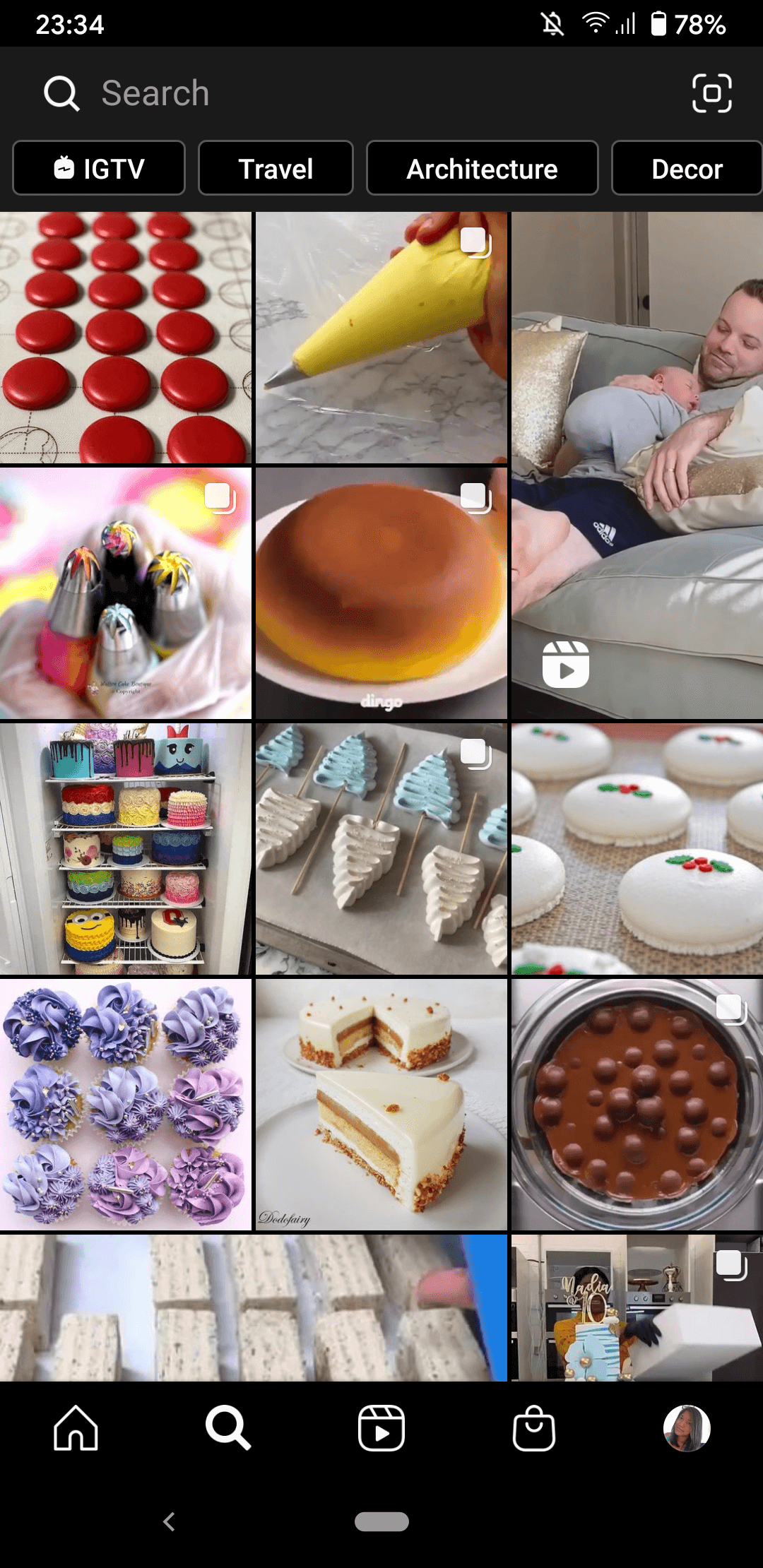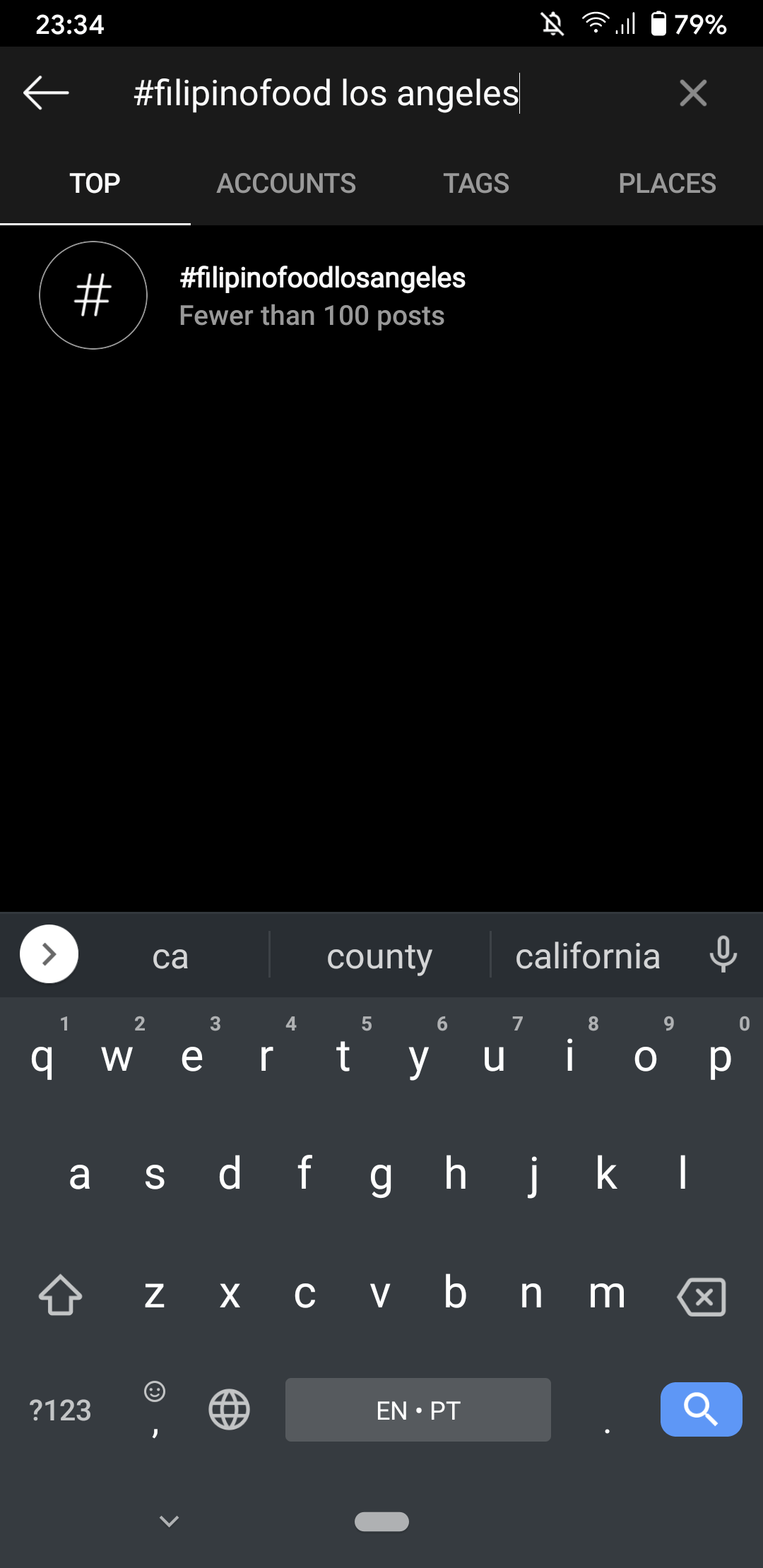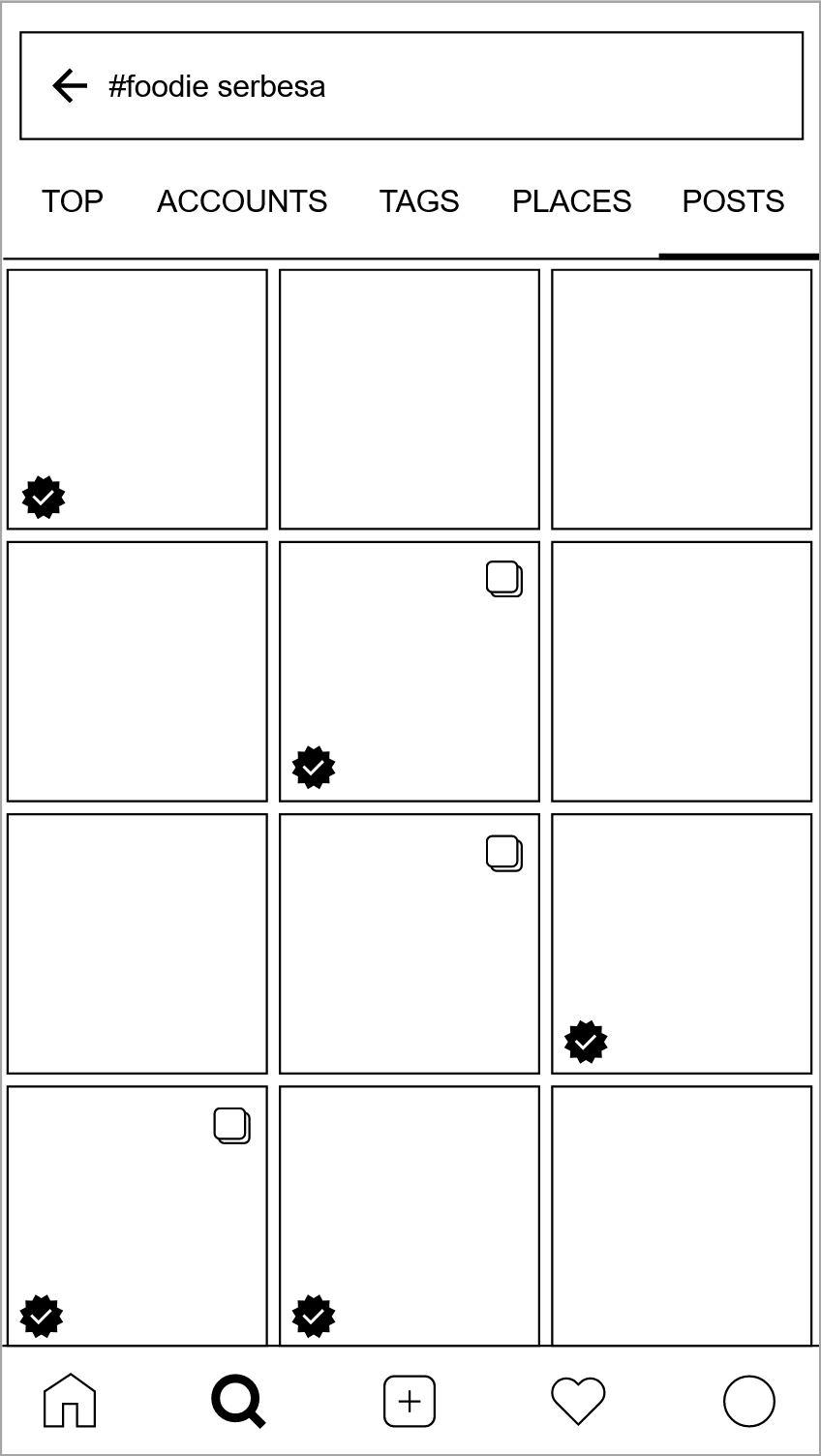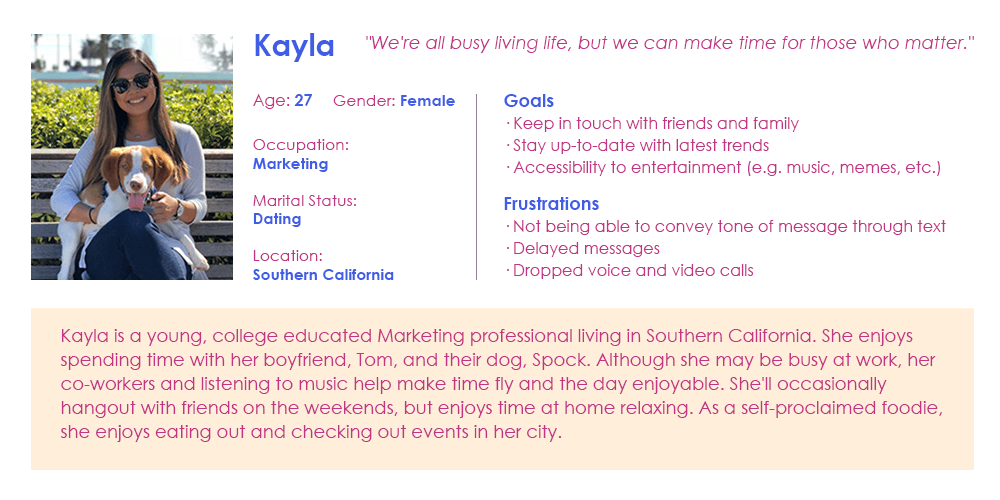Instagram Search
Instagram is a popular social media platform focused on people sharing photos, stories, and clips to connect with one another. However, when trying to find posts based on specific parameters, the search function has some limitations. I set out to help people with this dilemma by exploring how to improve this feature.

PROJECT
UX/UI
TIME
1 week
TOOLS
- Pencil & Paper
- Photoshop
- Adobe XD
- Figma
PROCESS
- Empathize
- Define
- Ideate
- Prototype
CHALLENGE
Improve Instagram’s search function so that users can find exactly what they’re looking for.
This project’s initial focus was to create an app to improve mobile communications, but through user research I pinpointed a specific UX issue with Instagram.
GOALS
- Add refinements to the search function
- Make it easier for users to find specific posts from search results
Empathizing with the Audience
Wanting to know how other women like myself communicated on their mobile devices, I chose female professionals in their 20s and 30s as my target audience. I interviewed 4 women regarding their mobile phone usage, with an emphasis on communications, by asking the following questions:
- What is the primary type of communication (calls, texts, emails, etc.)?
- Name your 5 most used apps
- Who do you communicate with the most?
- When do you use your phone to communicate?
- What types of messages do you send?
- What issues do you usually encounter when communicating?
From these interviews, I compiled their answers and biographical data to create a persona.
Defining the Problem
To better understand a user’s experience and any pain points they may encounter, I created a customer journey map where my persona, Kayla, interacts with Instagram (the most common app used among those interviewed) to find out more about a restaurant she discovered through a hashtag she follows.
I decided to focus on addressing her frustrations with the first step of her experience, and developed the following point-of-view problem statement:
Kayla, a working woman in her 20s, needs to efficiently search for and locate information on Instagram about a new restaurant’s soft opening because she wants to share a new and (hopefully) fun experience with friends she hasn’t seen in awhile.
Ideating Solutions
I used the SCAMPER method to help generate various ideas and solutions on how to improve the user’s experience with Instagram. To address the point-of-view problem statement, I chose to implement two ideas – making the search function more robust and magnifying posts from official or featured accounts.
Substitute
- Can I substitute the app/channel that is being used to communicate?
Facebook messenger or Whatsapp - Can I replace the person(s) using app?
Business instead of individual - Can I change the type of business being searched for/viewed?
Service-based, specialty store, clothing brand, event - Can I use another process to schedule the meet up?
Built-in calendar or RSVP through Yelp (if business has Yelp page)
Combine
- What processes can I combine to make things more efficient?
SEARCH & FIND to make search more robust by allowing multiple types of search in one (e.g. hashtag and restaurant name to refine search results)
Adapt
- What idea can I adapt, copy, or borrow from another product/service?
Implement schedule/rsvp function to chat like FB messenger
Modify (Magnify or Minimize)
- Can I add extra features?
Add more functions to the DM (direct message) feature: vote/poll or schedule/rsvp - What can I magnify or make larger?
Posts/photos from official or featured accounts
Put to Another Use
- What else can it (Instagram) be used for?
Finding inspiration or discovering new things (recipes, people, events, etc.)
sharing ideas - Which other target group could benefit from this product?
Businesses
Eliminate
- What would happen if I removed a part of the current process?
It would make things more difficult for the user - What if I eliminated the shared experience?
The functionality of the app would be more focused on the user – possibly become more diary or journal-like
Rearrange
- Can I rearrange the steps in the process?
If I switched SEARCH and FIND, the user can discover other hashtags used by the business to lead to other things - What would happen if the whole process was reversed?
The perspective of the problem would change – the search would be more generalized
Additional Research
Before sketching out low-fidelity wireframes, I looked into Instagram’s search and how it compares to my experience and general knowledge of using the search feature on various sites and apps.






Creating a Prototype
Wanting to focus on a way for people to search through posts, I created another section specifically for ‘Posts.’ Within this area, people would be able to search using a mixed query of hashtags, account names (@), and simple keywords to find exactly what they’re looking for.

I started off by sketching the user flow of going through the Search function, and accessing the new ‘Posts’ section. I weighed pros and cons for two ways of displaying search results – masonry like the main search screen or the general display grid.
Although the masonry layout was more visually appealing, an issue could arise with consecutive posts from verified accounts (which would be enlarged to differentiate them from normal accounts).

I opted to use the standard grid display, and include the verified icon on posts from official accounts to make them stand out.
I created a lo-fi interactive prototype to demonstrate the new user flow and gain some experience working in Adobe XD.

Lessons Learned
With the initial scope of the project being so broad, conducting user research such as interviews was eye-opening to understand problems that may not have been otherwise noticed. Additionally, creating a persona and scenario to really focus on the user’s experience was critical in pinpointing the main issue.
While researching about how to get verified on Instagram, I found out that this status can be difficult to get because of the required criteria. Smaller businesses that aren’t as well known or just starting out would most likely not be able to get this badge, and my solution for identifying posts this way would only work for some accounts.
An interesting side note from one of the women I interviewed was being introduced to another area of Instagram for ‘Posts You’ve Liked.’ The interviewee expressed her frustrations with scrolling through this section, and even shared her thoughts on how her experience could be better. However, with its visibility being somewhat hidden within the Settings, I don’t predict much ROI with revising this area.
This project reminded me that there’s always room for improvement if you take the time to listen to your users and really understand how they use your product.

